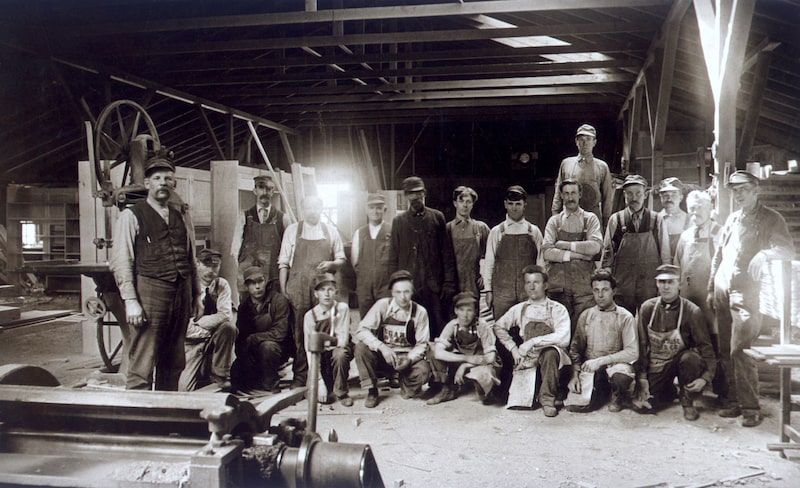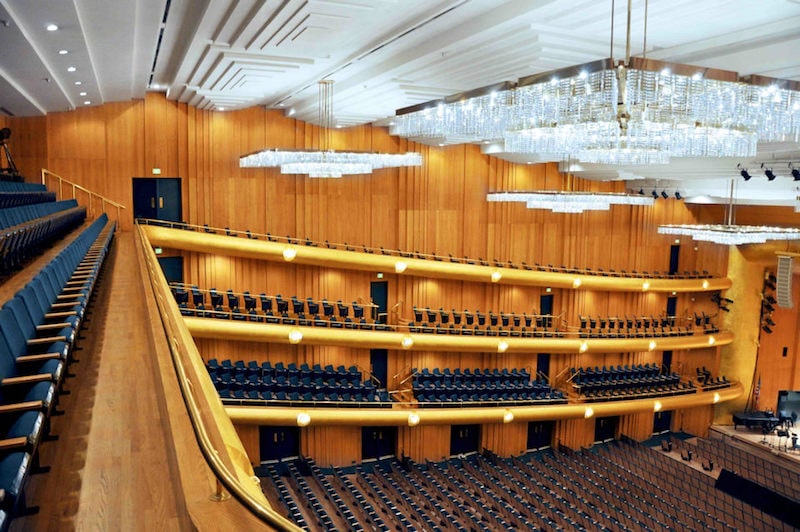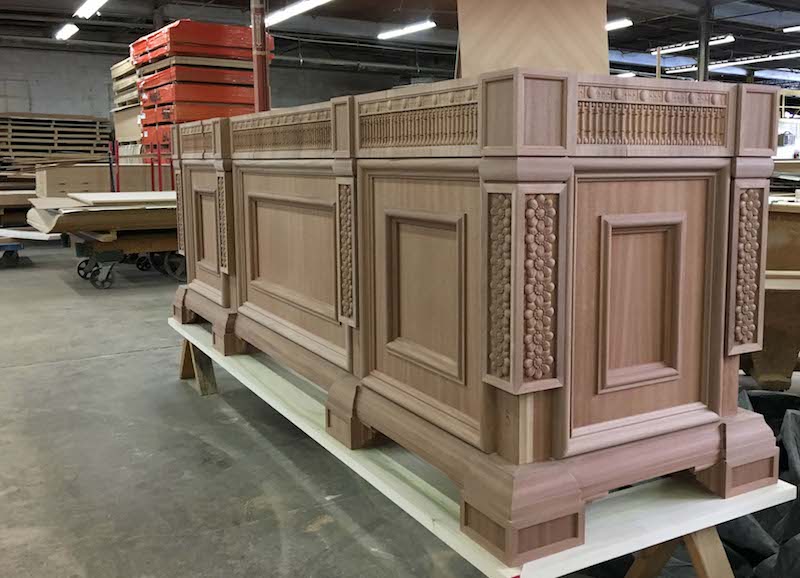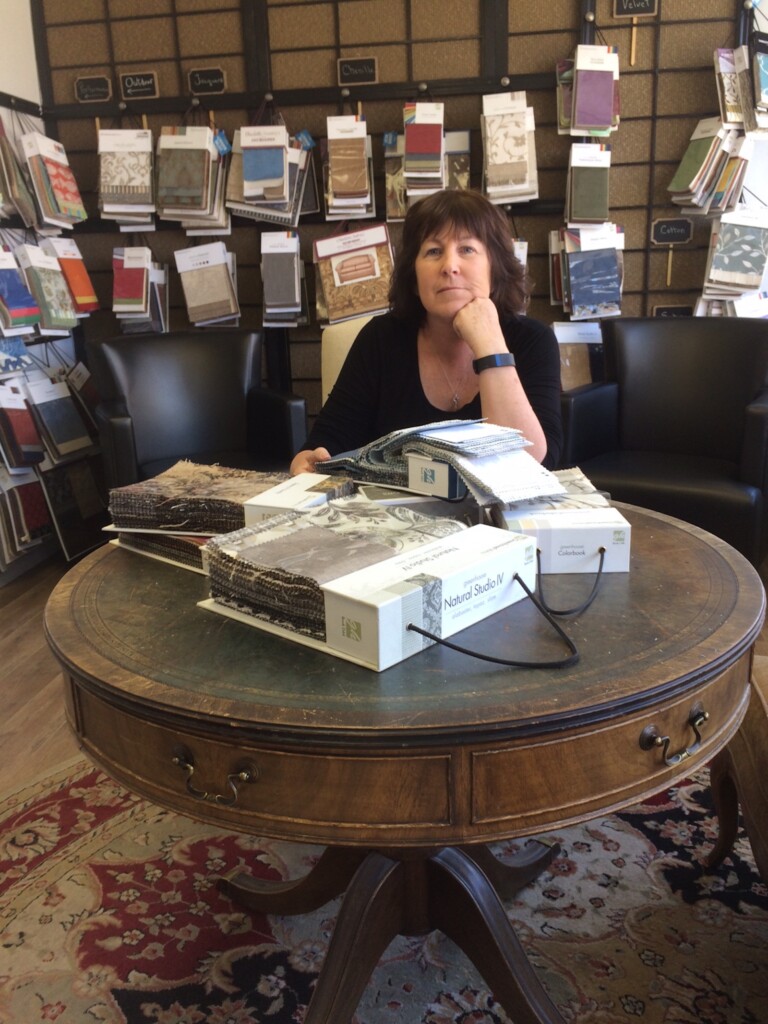
In the spring of 1907, the city of Salt Lake had only eight miles of paved roads, leaving the rest muddy, bogged-down, and at times, almost impassable. The automobile was gaining a foothold in the area, and with such rough road conditions, some brave drivers would take a chance by driving along the railroad tracks. This was fine until a train came along. The joining of the Intercontinental Railway in 1869 made it possible for hardwoods like oak and maple from the east coast, and softer woods like redwood from the west coast, to be shipped into Utah from lumber mills across the United States for planing. The wood made its way to the Granite Planing Mill, owned and operated by Frederick Sandberg, a Swedish immigrant who brought with him an elite set of carpentry skills and snickagleda (the joy of the carpenter), and bric-a-brac (curves and turnings) from Scandinavia.
Upon his arrival, Sandberg served as an engineer and craftsman, working on intricate creations and carvings like the spiral staircases in the Salt Lake Temple. After the temple’s dedication in 1893, Sandberg worked on other structures throughout the state. In fact, all the ornate woodwork in the area, from the LDS temples and the Stations of the Cross at the Cathedral of the Madeleine, to carvings and restored lighting in the First Presbyterian Church next door, and many homes in the avenues of Salt Lake City, have Granite Mill’s stamp on them.
In 1907, after 35 years in South Salt Lake, Sandberg moved the Granite Planing Mill to the historic Sugar House district where the Frederick Sandberg Memorial Bridge remains near Wilmington Avenue, and where a stream once ran through the property.
Two short years later, in 1909, the building burned to the ground. After the fire reduced the mill to rubble, Sandberg joked with his friends and family that he “didn’t have enough money to get out of town, so he would have to stay and rebuild”, and rebuild he did.
Sandberg rebuilt the property which remained in Sugarhouse for decades. It stood behind the old ice storage building and cooling tower alongside a watermill, where a pulley system harnessed the energy from the water to pull the lumber through the planer. The watermill wasn’t dependable, and when the water wasn’t flowing at its highest, it simply broke down.
Sandberg purchased a Carlos Steam engine in Oregon and brought it home. He built a line shaft ― a power-driven rotating shaft for power transmission ― strung with pulleys and lines, thus beginning the process of getting away from hand-planing each individual piece.

Over many years, Granite Mill completed many intricate woodworking projects. In fact, this family of craftsmen has their fingerprints almost everywhere across the state. Gary Sandberg, son of Frederick, shared his memories with me during a recent conversation about structures throughout the state, such as the Governor’s Mansion, with its Botticelli carvings. The Alta Club, the Huntsman Cancer Institute, the woodwork restoration in the Salt Lake City & County Building, and the Matheson Courthouse across the street are just a few of the family’s many artistic contributions.
When I asked Gary which was his favorite, he couldn’t narrow it down, explaining that pride by nature isn’t a good attribute. But after some convincing, he shared one of his most memorable endeavors: Abravanel Hall. “It wasn’t necessarily the most difficult to construct, but perhaps the most educational. The company brought in Dr. Cyril Harris, an acoustical engineer responsible for the sound in the most prominent concert halls in the country, including the Metropolitan Opera and Avery Fisher Hall,” and our own Abravanel Hall. Gary remembers creating the curves of the walls and balconies, bending and shaping the white oak, and making certain that the space behind the wood was of a certain thickness as if the hall itself was one giant sound chamber.

It was the learning and doing that made Sandberg’s career so interesting. His personality and storytelling quality is one that you could enjoy for hours as he explains the intricate details of fine craftsmanship and premium dovetail grade joints instead of what you often find in stores now.
Gary mentioned that one of his first jobs was unloading logs from railcars in the 1960s. “It was an opportunity to earn some money,” he said. “I crawled into the railcar on my hands and knees ― I was scrawny back then ― and pushed the carload of 18 x 24” wide, 3” thick, and 30’ long planks, rough and full of slivers that were stacked all the way to the top of the car for them to be planed.”
Gary’s sense of family pride and the uncommon stability found at Granite Mill is a special perk of the business. Three out of four of his boys have followed in the family’s footsteps. His son, Wayne Gary Jr., known as Sandy to friends and co-workers, is now the president of the company. Matthew is the vice-president and C.F.O., and the second to the youngest, Christopher, is now the C.O.O. The youngest son, Stephen, is taking a different route into real estate law.
It’s all about line shafts, steam engines, hard and softwood joined together by a railway, premium dovetail joints, and a 114-year family legacy. As Gary said, “It is an honor to walk into structures all over the valley and all across the Intermountain West, and knowing that my grandfather, or my father, or my son was there, touching that very wood, is a blessing.”
Subscribe to Utah Stories weekly newsletter and get our stories directly to your inbox





